| Admin | ||
| Home | Contents | |
| H&S Policy |
Safeguarding | |
The Church & The World
Church & World
Church & World
Things Past
People & Features
People & Features
Modulo - The Big Picture
Giving Life Meaning
Giving Life Meaning

Module 3 - The Apostle's Response
(Click on any text in blue to go to that item)
(Click on any text in blue to go to that item)
Print this page

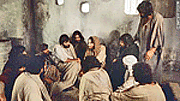
This Module looks at what the disciples did after Jesus returned to heaven, as recorded in the book called 'The Acts of The Apostles' (often just called 'Acts'), plus a summary of St Paul's Letters to the Romans and the Corinthians.
The main Module has 6 parts that explore how the Apostles took out Jesus' message to the wider world, plus Paul's summary of the Gospel principles and ways of putting them into practice. There is also an optional Appendix that explores the rest of the New Testament Letters which were written to individuals and groups, to help us apply Jesus' teaching to our own life today.
(Return to top)
The main Module has 6 parts that explore how the Apostles took out Jesus' message to the wider world, plus Paul's summary of the Gospel principles and ways of putting them into practice. There is also an optional Appendix that explores the rest of the New Testament Letters which were written to individuals and groups, to help us apply Jesus' teaching to our own life today.
(Return to top)
- Module 3 Index
3/0: Introduction (This page)
3/1: Drawing People In
3/2: The Need To Change
3/3: Taking The Message Out - 1
3/4: Talking The Message Out - 2
3/5: Paul's Letter To Romans
3/6: Paul's Letter To Corinthians
- Optional Appendix
3/7: Paul's Other Letters
3/8: The General Letters - 1
3/9: The General Letters - 2
(Return to Big Picture Menu)
(Return to the Modulo Main Menu)
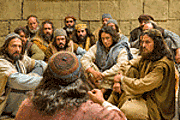
After Jesus returned to heaven, the Apostles first received the Holy Spirit as Jesus had promised, which gave them courage and strength to preach Jesus' message to anyone who would listen - and thousands believed.
At first they were drawn into a 'Fellowship of Believers', sharing everything in common (as they thought Jesus would return very soon - certainly in their lifetime), but they were persecuted by the established religious authorities, so they broke up and scattered.
(Return to top)
At first they were drawn into a 'Fellowship of Believers', sharing everything in common (as they thought Jesus would return very soon - certainly in their lifetime), but they were persecuted by the established religious authorities, so they broke up and scattered.
(Return to top)
- Scholars accept the Letter to Romans is by Saint Paul.
- Romans and Corinthians are the longest of St Paul's letters.
(Return to top)
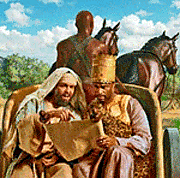
In this Letter to the People of Rome, Paul provides a summary of the Gospel message that many find useful to us today.
Scholars acknowledge that St Paul wrote many of the New Testament Letters, but the author of several is 'unsure', some may be by Paul, as their style is similar, or they could be by someone who admired him so wrote in his name.
(Return to top)
Scholars acknowledge that St Paul wrote many of the New Testament Letters, but the author of several is 'unsure', some may be by Paul, as their style is similar, or they could be by someone who admired him so wrote in his name.
(Return to top)
- Up to now, converts were required to adopt the Jewish way of life. After his vision, Peter was guided to meet with, and baptise, a Roman Centurion who was a Gentile, a non-Jew.
- Peter explained his vision and actions to the other believers, who agreed God intended all people to be included in his Kingdom, not just Jews. (Return to top)
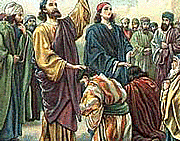
Paul and Barnabas make the first and second of four missionary journeys, taking the message out to, and making converts of, the people in Greece and 'Asia Minor' (parts of modern Turkey). They met with both success and resistance, some of it life threatening, including Paul being stoned (but surviving).
Some still insisted all Christian converts must adopt the Jewish way of life too, but Paul and Barnabas disagreed and took their concerns to the Apostles in Jerusalem, where a 'Council' met and produced a clear instruction.
(Return to top)
Some still insisted all Christian converts must adopt the Jewish way of life too, but Paul and Barnabas disagreed and took their concerns to the Apostles in Jerusalem, where a 'Council' met and produced a clear instruction.
(Return to top)
- On the first journey they visit 4 towns in the region of Galatia but Paul and Barnabas have a disagreement over Mark, so make the 2nd journey separately.
- On the second journey, Paul visits Philippi, Thessalonica, Berea, Athens, Corinth and Ephesus. (Return to top)
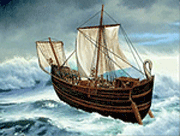
Paul makes a third missionary journey by choice but the fourth journey is forced on him when he's arrested and sent to Rome
to defend himself before Caesar. Although under house arrest, he's still able to preach the Gospel.
The Book of 'Acts' ends here, but history records that Paul was eventually decapitated by order of the Emperor Nero.
(Return to top)
(Return to top)
- For the third journey, Paul returns to Ephesus then on to Macedonia (northern Greece) before returning to Jerusalem, via many stops on the way.
- The route to Rome is delayed by a shipwreck, which takes them to the island of Malta.
(Return to top)

In this Letter to the People of Rome, Paul provides a summary of the Gospel message that many find useful to us today.
Scholars acknowledge that St Paul wrote many of the New Testament Letters, but the author of several is 'unsure', some may be by Paul, as their style is similar, or they could be by someone who admired him so wrote in his name.
(Return to top)
Scholars acknowledge that St Paul wrote many of the New Testament Letters, but the author of several is 'unsure', some may be by Paul, as their style is similar, or they could be by someone who admired him so wrote in his name.
(Return to top)
- Scholars accept the Letter to Romans is by Saint Paul.
- Romans and Corinthians are the longest of St Paul's letters.
(Return to top)
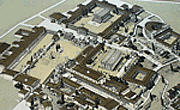
Where the Letter to the Romans gives a summary of Jesus teaching, the two Letters to the Christians in Corinth give a good summary of how to put it into everyday practice.
(Return to top)
(Return to top)
- Scholars accept the 2 Letters to the people of Corinth are by Saint Paul (ie: 1 and 2 Corinthians).
(Return to top)
Optional Appendix - Other Letters of Guidance

Paul wrote several other Letters to churches he founded on his journeys, or to people he worked with to support them or correct them where he'd heard they might be going wrong. They include guidance on Christian forgiveness, dealing with heresy, faith leaders, and elders.
(Return to top)
(Return to top)
- Some, but not all, of these Letters are attributed to Saint Paul - the description of each Letter identifies the generally accepted author.
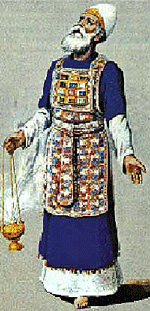
This Module begins with a substantial Letter addressed to the Hebrews justifying Jesus as the Messiah and declaring him the 'High Priest' of the New Covenant, different from the priests of the Old one. It also includes the first Letter by the Apostle Peter.
This Module begins with the second Letter of the Apostle Peter, then a Letter thought to be by James, Jesus' brother, plus Letters by John (the same John who wrote the Gospel), and one by Jude, who writes about false teachers.
It concludes with an introduction to the last book - Revelation - which is effectively a Letter to us all but, because of the difficult style in which it's written ('Apocryphal'), it's best to read it with a book alongside that interprets it, so it's not explored here at length.
(Return to top)
This Module begins with the second Letter of the Apostle Peter, then a Letter thought to be by James, Jesus' brother, plus Letters by John (the same John who wrote the Gospel), and one by Jude, who writes about false teachers.
It concludes with an introduction to the last book - Revelation - which is effectively a Letter to us all but, because of the difficult style in which it's written ('Apocryphal'), it's best to read it with a book alongside that interprets it, so it's not explored here at length.
(Return to top)
- The letter to the Hebrews is shown in some Bibles as being by Saint Paul, but recent scholars now doubt that, so it's now attributed as author 'unsure'.
(Return to top)
.
This Module begins with the second Letter of the Apostle Peter, then a Letter thought to be by James, Jesus' brother, plus Letters by John (the same John who wrote the Gospel), and one by Jude, who writes about false teachers.
It concludes with an introduction to the last book - Revelation - which is effectively a Letter to us all but, because of the difficult style in which it's written ('Apocryphal'), it's best to read it with a book alongside that interprets it, so it's not explored here at length.
(Return to top)
It concludes with an introduction to the last book - Revelation - which is effectively a Letter to us all but, because of the difficult style in which it's written ('Apocryphal'), it's best to read it with a book alongside that interprets it, so it's not explored here at length.
(Return to top)
- Both '1 and 2 Peter' are thought to have been genuinely written by the Apostle Peter.
- This Module completes the currently available 'Modulo' material so ends with a recommendation of what to do next.
(Return to top)
 St Mary's Church, Dymock
St Mary's Church, Dymock